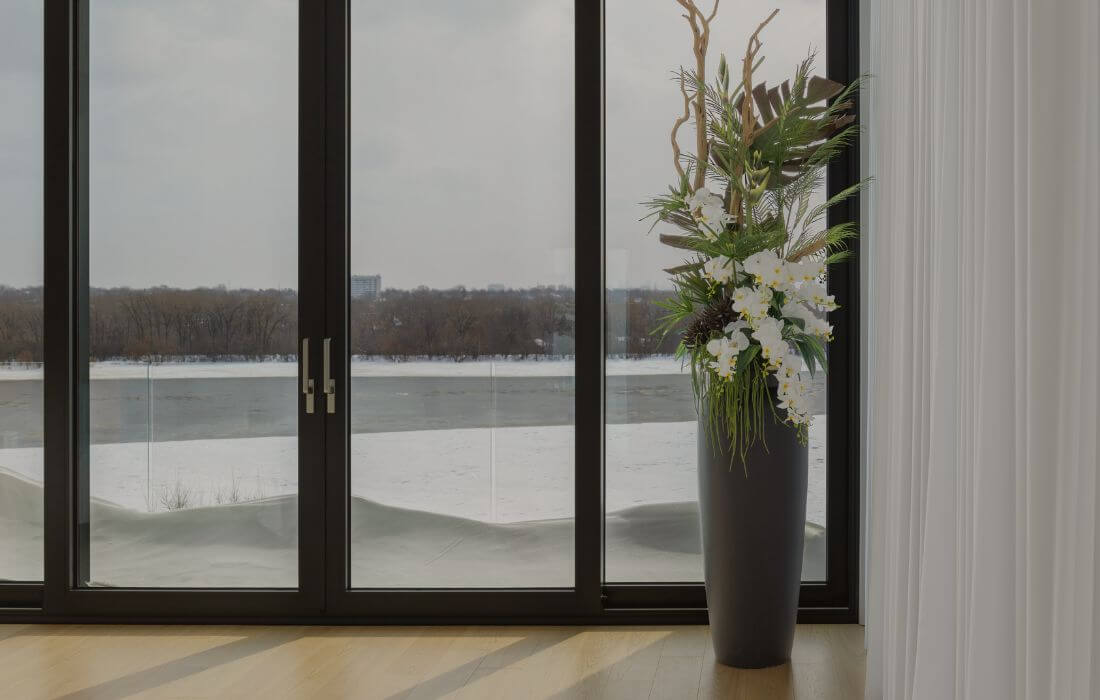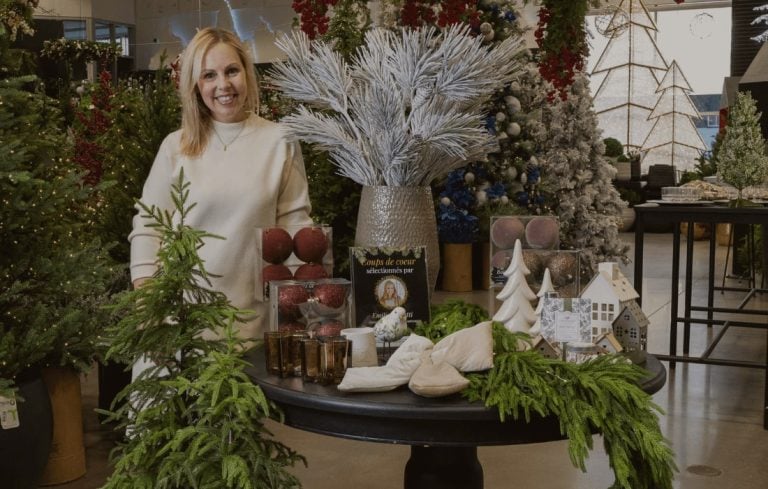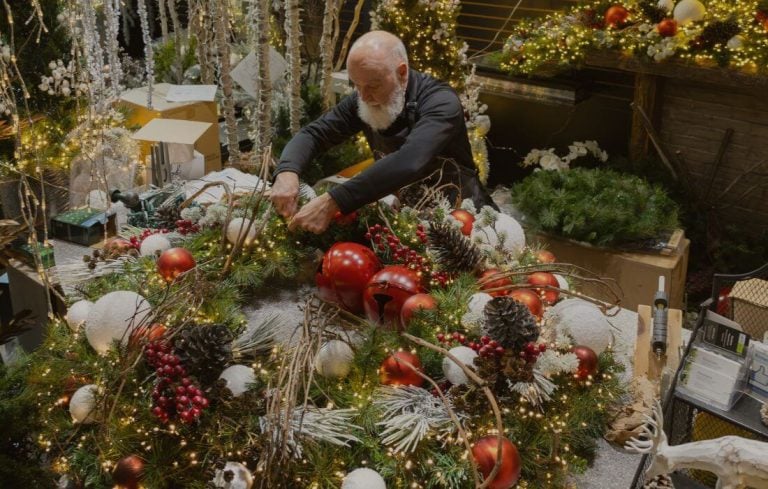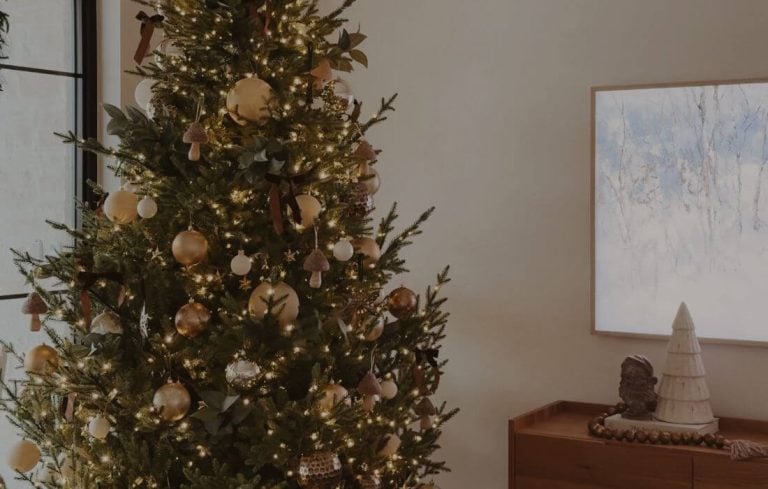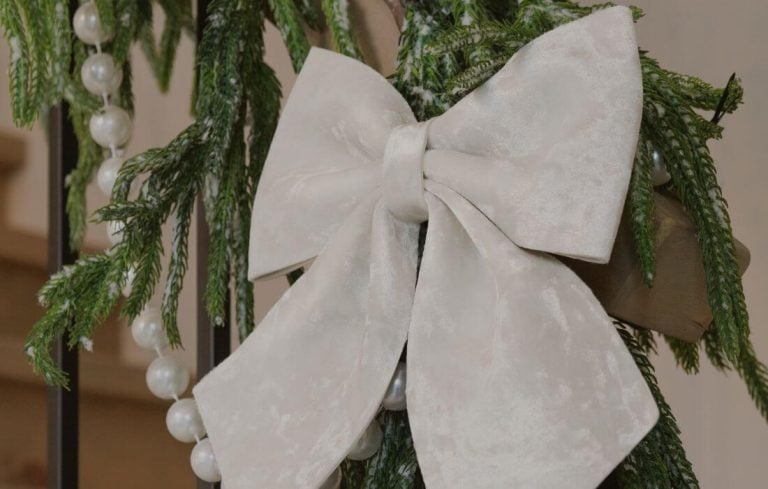Creating the perfect floral arrangement goes beyond simply choosing pretty flowers. It’s a true work of art where balance, texture, shape, and color all come together. In this article, we’ll walk you through the fundamentals of combining flowers and greenery, how to blend elements to create a balanced, natural-looking, and visually appealing arrangement, even with artificial flowers.
1/10 Define the desired style of the arrangement
Before choosing your arrangement’s components, consider the overall style you’d like to reflect. It will influence your selection of shapes, colors, textures, and even the choice of vase.
Natural and minimalist style
- Flowers : carnations, freesias, wildflowers
- Greenery : eucalyptus, ferns, ruscus
- Palette : beige, coral, brown, clear, sage green
- Tip : mix light textures with neutral tones


Modern and contempory style
- Flowers : orchids, lilies, magnolias
- Greenery : monsteras, cordylines
- Palette : deep green, white, beige, black
- Tip : go for minimalist designs
Romantic and classic style
- Flowers : roses, peonies, hydrangeas, baby’s breath flowers
- Greenery : rose leaves, eucalyptus, clusias
- Palette : red, powder pink, cream, off-white
- Tip : choose dome-shaped arrangements
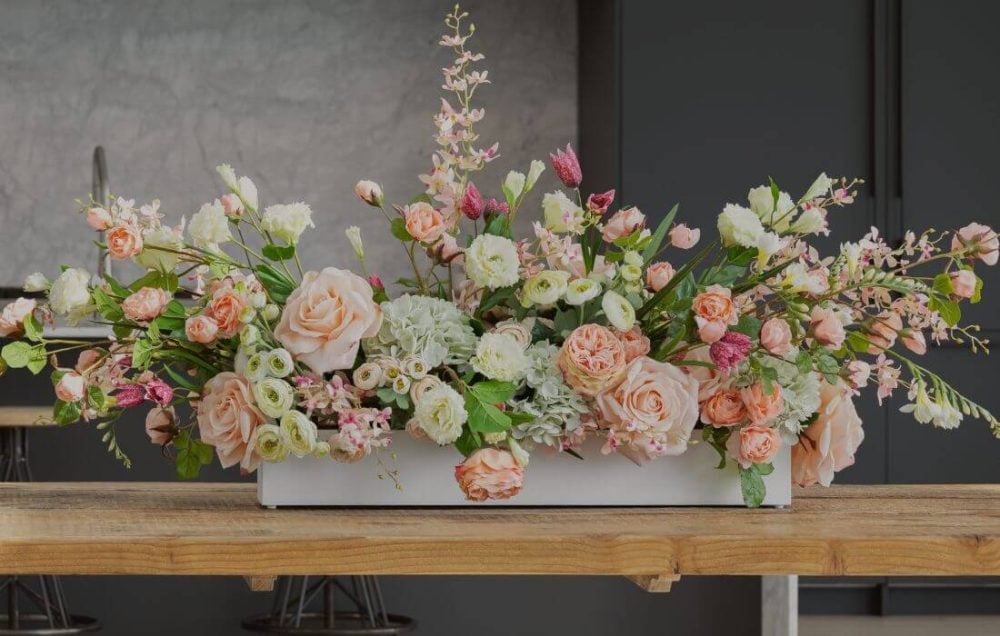

Tropical and eclectic style
- Flowers : anthuriums, bird of paradise, heliconias
- Greenery : palms, monsteras, extra-large leaves
- Palette : jungle green, orange, red, fuchsia
- Tip : choose lush, full arrangements
2/10 Build a foundation of greenery
Always start with the foliage, as it serves as the foundation of your arrangement. Place the stems in a cross or fan shape to create a balanced structure. Angle some leaves slightly outward and others inward to add volume. Don’t hesitate to use different types of foliage to vary the textures.
Classic greenery used in floristry:
3/10 Use the visual triangle rule
The triangle rule is essential for positioning your main flowers:
- Imagine a triangle within your arrangement: place the central flowers at three different heights (high, medium, low). This creates a visual dynamic that naturally draws the eye.
- Position the focal point (the main flower that grabs the most attention) slightly off-center.
- Use 3 to 5 main flowers in an arrangement, always in odd numbers.
4/10 Arrange colors and textures
One of the most challenging steps in creating a floral arrangement is pairing flowers and foliage in a harmonious way. To guide your choices, the color wheel is an excellent starting point.
Use the color wheel
- Analogous colors : shades close to each other (like pink, peach, and cream) create a soft and natural atmosphere.
- Complementary colors : hues opposite each other on the wheel (such as purple and yellow, or red and green) add contrast and energy.
- Monochrome palette: variations of a single color in multiple shades (e.g., white, ivory, beige) for an elegant and understated effect.
Classic flowers used in floristry:
5/10 Maintain proper proportions
It’s important to always consider the visual weight of the flowers and foliage you choose. For example, if you have a small vase, it’s best to avoid using very large flowers. The general rule in floral design is simple:
- If you have a tall, narrow vase, opt for a vertical, slender arrangement.
- If you have a wide, low vase, favor a rounded, spread-out silhouette.
- If the vase is highly ornate, keep the arrangement simple to avoid overwhelming the overall look.
6/10 Match textures and volumes
Visual harmony also involves texture. Pair flowers with smooth petals with foliage that has more texture, or vice versa. Here are a few suggestions:
- Delicate flowers (such as anemones or ranunculus) paired with airy foliage (eucalyptus, asparagus ferns).
- Massive flowers (lilies, hibiscus) paired with stiff or architectural foliage (monsteras, cordylines).
- For a natural effect, alternate between stiff stems and more flexible foliage.
Finally, consider the seasons: for a summery vibe, favor light tones and bright foliage. In fall, lean towards warm hues (terracotta, mustard, burgundy) and richer textures.
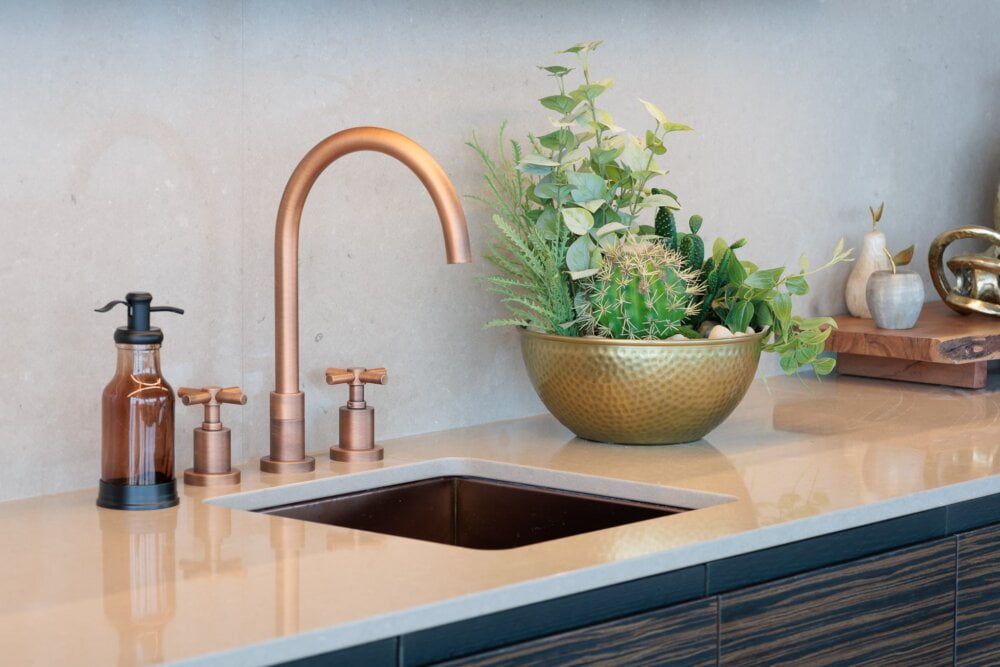
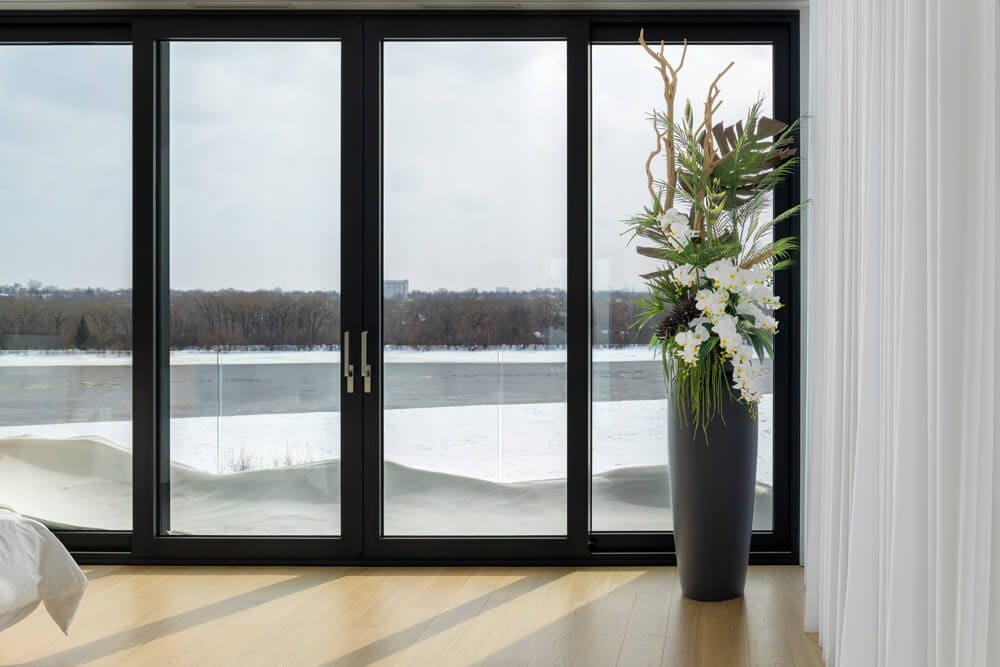
7/10 Work with grouping or repetition
To avoid an unbalanced look, it’s better to repeat elements rather than scatter them randomly:
- Group identical flowers in pairs or threes
- Repeat the same type of foliage in several spots
- Maintain a clear visual logic: verticality, spiral, or deliberate horizontality.
8/10 Arrange in zones for greater depth
Think of your arrangement in three depth zones:
- The back : tall, structural elements
- The center : main flowers, arranged at varying heights
- The front : shorter or cascading stems
This arrangement adds movement and prevents a flat or rigid look. Rotate the arrangement regularly to adjust the volumes and maintain a pleasing view from multiple angles.
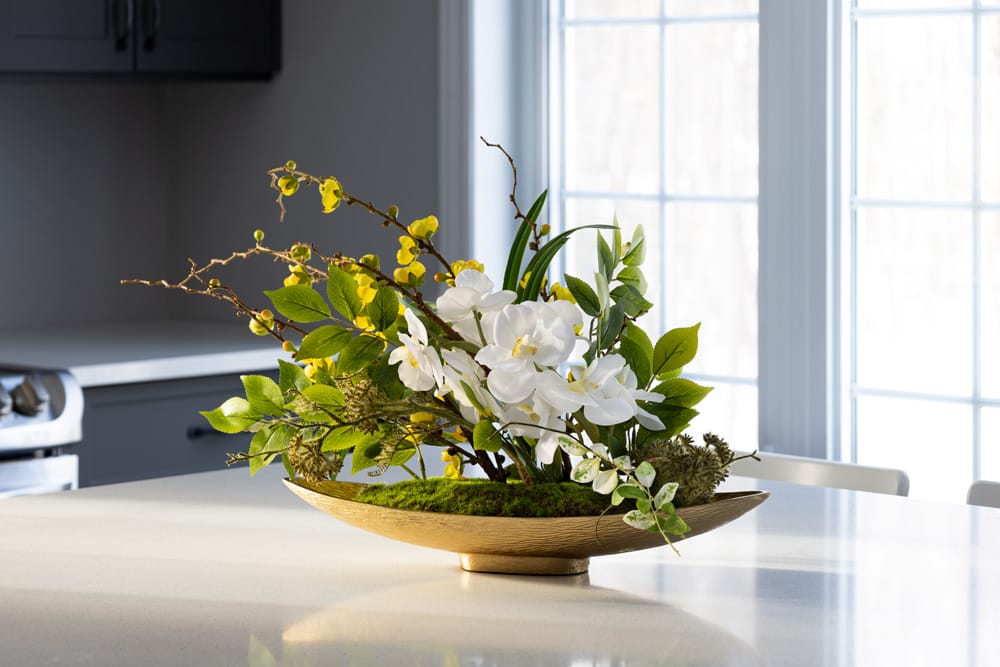
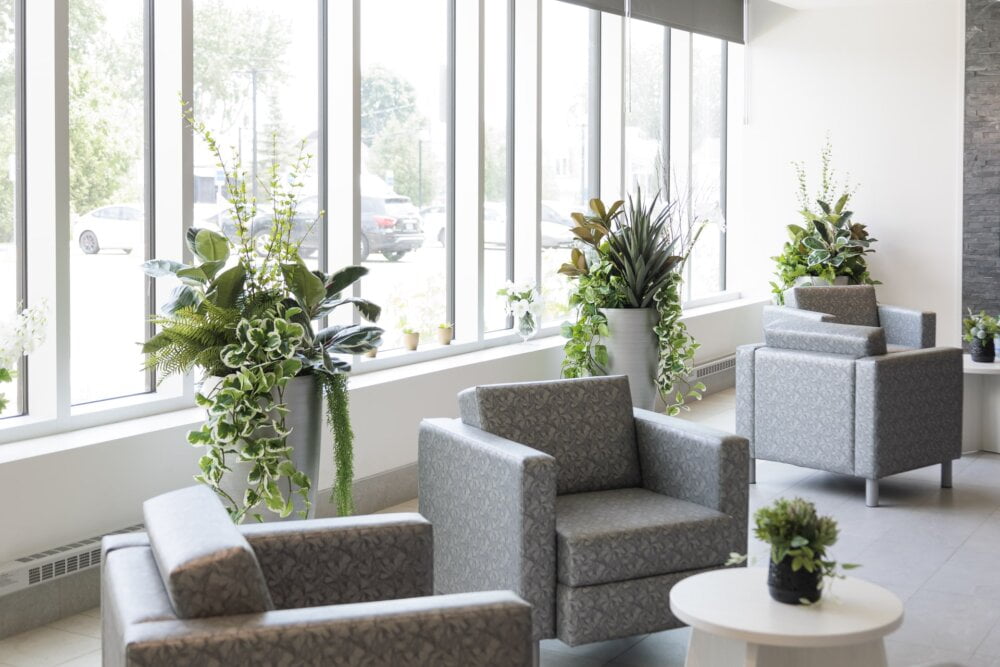
9/10 Add decorative elements
Add a few subtle accessories to enhance the arrangement :
- Decorative stems: in gold metal, wood, or curved shapes
- Small fruits and berries: for a natural and festive touch
- Feathers and pampas grass: perfect for adding light volume
- Jewelry and ribbons: ideal for special occasions like weddings
Classic accessories in floristry :
10/10 Add a finishing touch to the vase
A floral arrangement, no matter how well done, can feel incomplete if the container is neglected. The finishing touch on the vase or cachepot is what elevates the entire design. Here are some ideas:
- Mulch : for large floor arrangements
- Colored gravel or sand : for table centerpieces
- Moss or curved stems : for arrangements in clear glass vases

